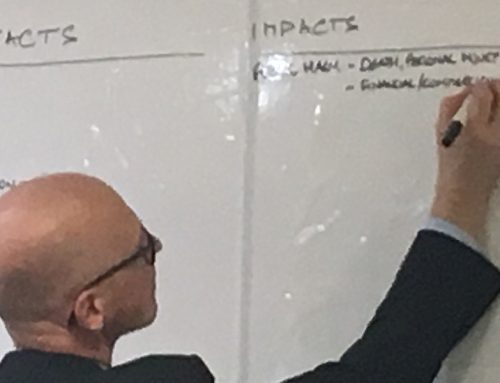A successful operational-level response relies on a competent and effective Emergency Response Team (ERT). Shift teams in the COMAH sector need to be prepared to respond to emergencies 24/7 with a consistent level of response capability across every shift.
When something unexpected happens on site, the ERT needs to quickly work through their first actions. They need to determine the scale and scope of the situation, assess potential escalation potential, decide on an initial plan of action, deploy resources and provide information to the Incident Management Team (IMT).
Training ERT and IMT personnel over the years has shown us that under stressful conditions (defined by time pressure, elevated risks, dynamic situations, high information loading and uncertainty) a very effective way of ensuring the right first actions are quickly taken is to have some key processes that everyone understands, are tried and tested and have been embedded through training and exercising.
ERT Processes
Our core ERT response processes ensure an effective, and importantly a consistent, response to any emergency situation, in any context. This process-driven approach guides the ERT to quickly carry out their first actions to assess the situation, consider possible response options, communicate with the control room, security and IMT, and to deploy resources. All while monitoring the unfolding situation, gathering information from as many sources a possible and considering escalation potential and wider impact on the site and surrounding area.
The ERT response processes are aligned to the requirements of the COMAH Regulations and also reflect elements of best practice from the civil emergency response services methodologies. In conjunction with site emergency response plans and documentation, this approach ensures that decisions and actions taken by the ERT during an emergency response are based on sound principles and practices.
On site training and exercises, not just in the classroom
ERT training sessions are a blend of theory and practical application where the foundations of emergency response principles and practices are provided first, then built on with the key ERT response processes before practical exercises out on site that bring all the elements of the learning together in the real world experience of the site context. We prepare realistic scenarios and timelines for a range of exercises based on the relevant organisational context and response capabilities.
Training in this way is most effective because the learning context closely replicates the actual environment that it will be transferred back to. This is the whole point of training – the transfer of information and experience to develop knowledge, skills and behavioural response patterns – so it pays to do it properly when it comes to ERT training. By maximising training transfer, this type of high-fidelity training also provides the best value for money.
Real competence development
Just like the systematic approach we use in the ERT training, we recommend a systematic approach to managing the training process, backed up by accurate record keeping to facilitate monitoring, forecasting and scheduling training sessions. This helps to ensure a consistent level of ERT capability across every shift and supports real competence development as the training programme progresses. This means knowledge, skills and behavioural response patterns improve over time as people gain familiarity and experience and supports the assurance of regulatory compliance.
Contact us
Contact us to discuss how we can help you.
Eddistone Consulting Ltd.





